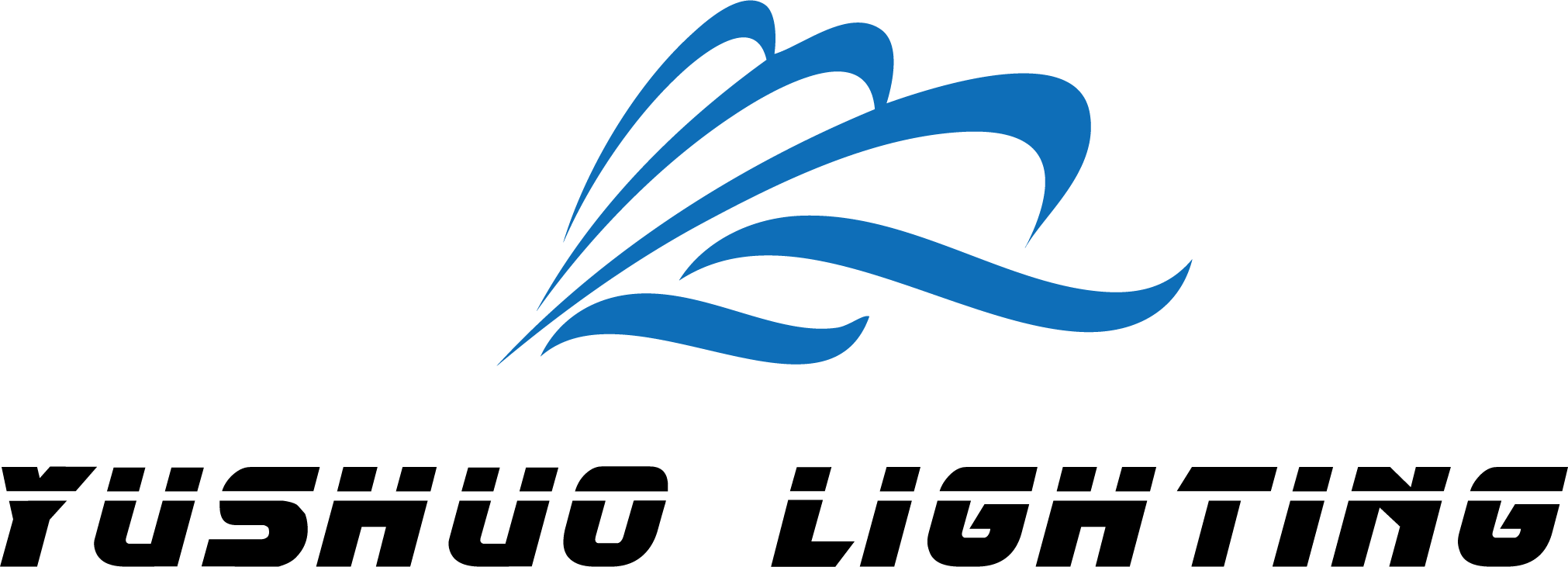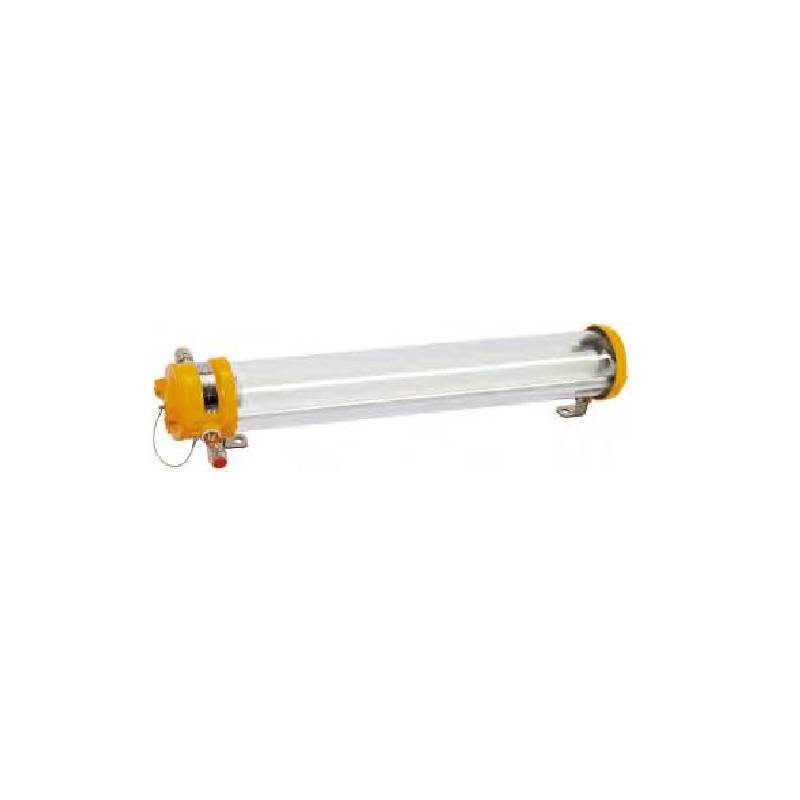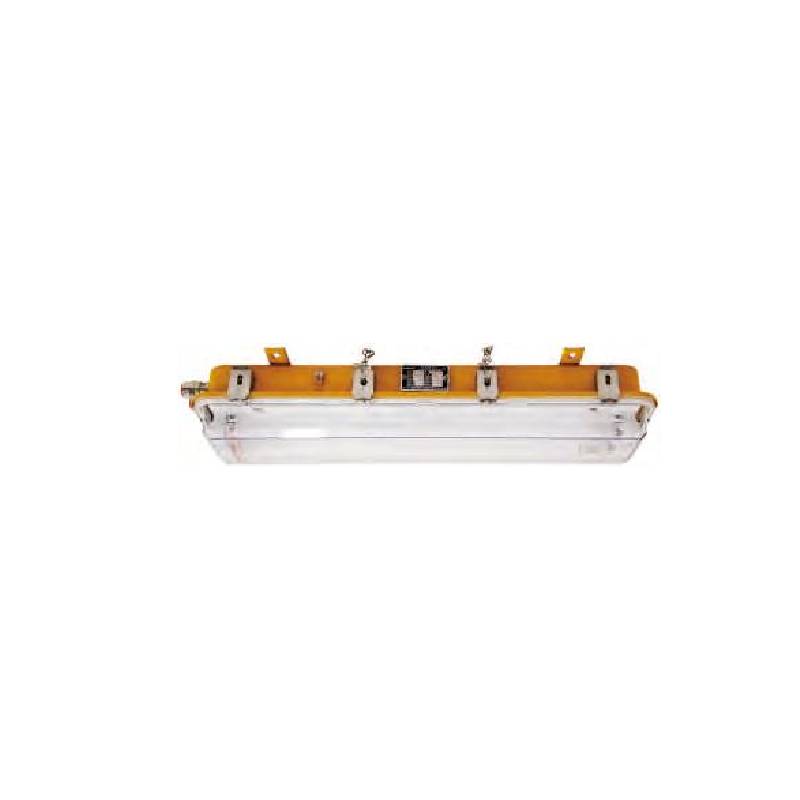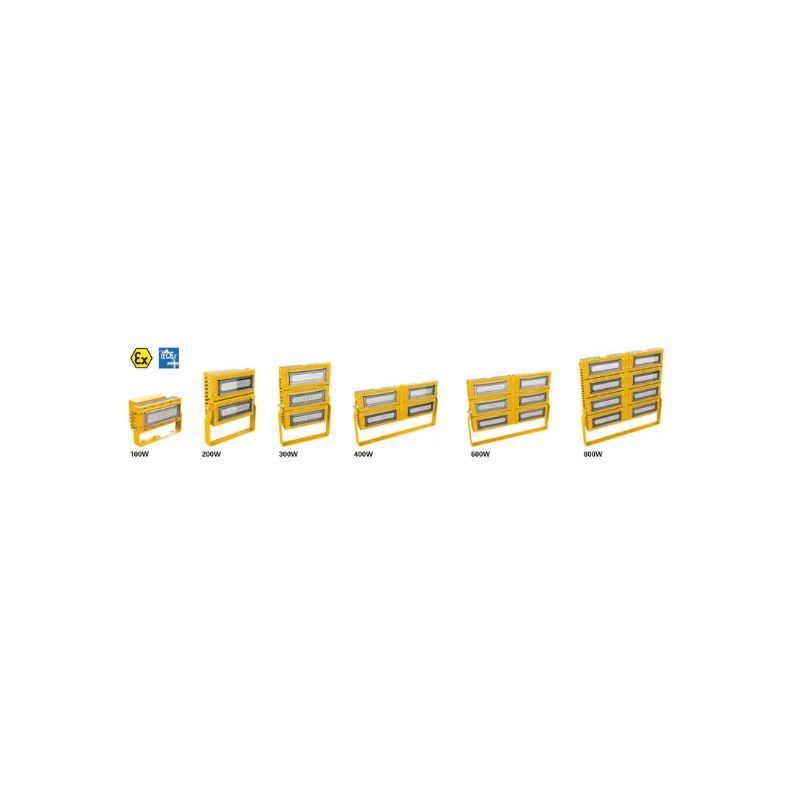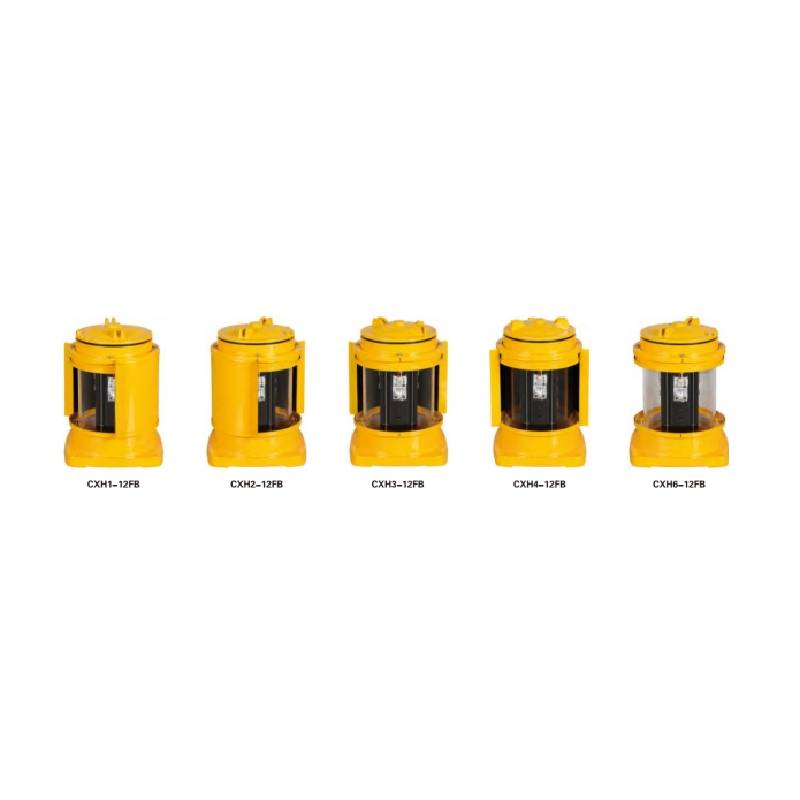How to Design Explosion-proof Lights for Marine Applications
Marine environments can be the most challenging environments to lighting system. From extreme levels of humidity, salt corrosion, to the presence of gaseous flammable substances and vapors. Lighting systems on offshore platforms, ships and oil terminals have to be able to perform safely and reliably in extreme conditions. Explosion-proof lights are specifically designed to tackle these issues that ensure the safety of both lighting and illumination when operating in hazardous maritime areas. Knowing how they are designed can help highlight their vital role during marine operations.
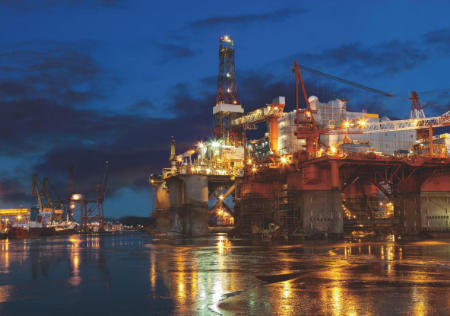
Table of Contents
Understanding Explosion-proof Lighting in Marine Settings
Explosion-proof lighting is designed to stop internal sparks or heat from burning the surrounding air. In marine environments, the flammable vapors of cargo, fuel or even maintenance tasks may mix with air to produce explosive mixtures. The main goal of an explosion-proof lighting design is to stop any ignition inside the lighting fixture, and ensure that the surrounding environment is protected regardless of the possibility that an internal malfunction develops.
Marine explosion-proof lights are used in hazardous zones such as engines rooms and fuel storage areas chemical tanks, as well as offshore oil platforms, where standard lighting could pose a serious risk.
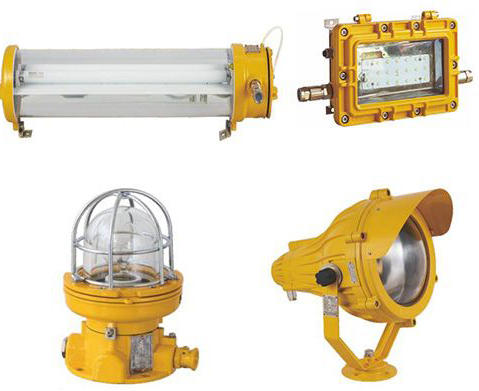
Key Design Principles of Explosion-proof Lights for Marine Applications
1. Explosion Containment and Flameproof Construction
The primary design concept of marine explosion-proof lighting fixtures is the containment of internal explosions. The fixture has to be designed in a way that any spark or burning that occurs inside does not ignite the surrounding surroundings. This is accomplished by the use of a flameproof enclosure, which is sturdy enough to stand up to an internal explosion and not break.
The housing has precisely made joints, also known as flame paths. These allow gases to cool and then quench before they enter the air. The length and thickness of these joints are determined based on the kind of gas, vapor or other substance that is likely to exist. This principle of containment is the basis of the safety of lighting that is explosion-proof.
2. Use of Corrosion-Resistant and Durable Materials
The marine environment exposes lighting equipment to humidity, saltwater, and continual vibration. So, choosing the right materials is crucial. Housings are usually composed of the marine grade aluminum alloys as well as stainless steel or copper-free brass, which offer excellent resist to corrosion. These materials keep their integrity in the face of extreme temperatures and shield internal components from environmental damage.
The exterior surfaces are typically coated with powder coatings, anodization, or epoxy layers to enhance resistance to corrosion by salt and UV radiation. Transparent components, like those covering lamps, are created from polycarbonate or tempered glass which is able to stand up to impact and pressure without compromising the optical clarity.
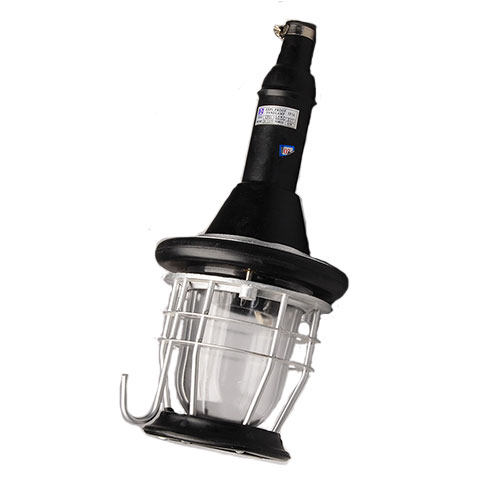
3. Sealing and Ingress Protection
A well-designed sealing system will ensure that the lights used to protect against explosions remain watertight and airtight even in the event of strong waves or heavy rain and high levels of humidity. High-performance gaskets and O-rings and sealing materials are used to stop the ingress of moisture, dust, and other chemicals.
Marine explosion-proof lighting must meet at a minimum the IP66 or IP67 rating, which guarantees security against solid particles as well as water immersion. The proper sealing does not just increase security against explosions but also extends the lifespan for the lamp by stopping electrical and corrosion problems.
4. Thermal Management and Heat Dissipation
Controlling temperature is a crucial design element. In excess heat in an explosion-proof enclosure could result in ignition risks or affect the efficiency of LEDs and electronic components. Thus, effective thermal management devices are incorporated into the design of the fixture.
The heat sinks and the conductory metal housings distribute heat evenly while maintaining the safe temperature of the surface. The use of low-thermal-resistance materials and optimized housing geometry ensures that the fixture operates well below the ignition temperature of surrounding gases. For LED explosion-proof lighting fixtures, constant-current drivers and thermal protection circuits are designed to prevent overheating and guarantee long-term reliability.
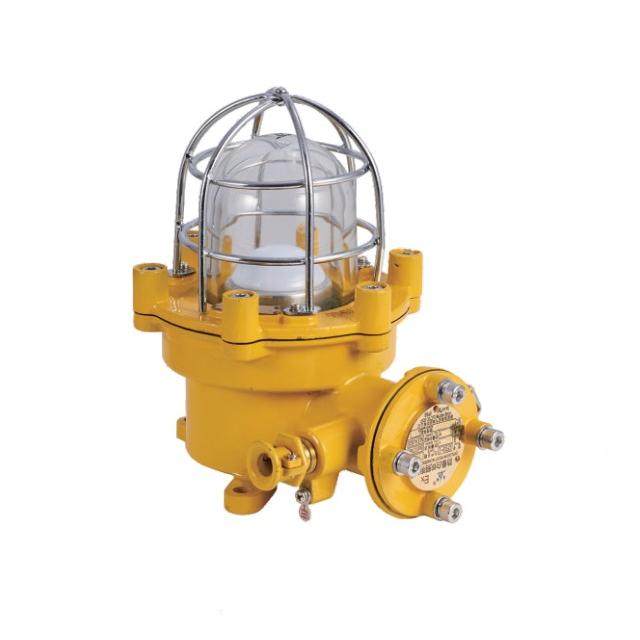
5. Electrical Safety and Component Isolation
Marine explosion-proof lights need careful focus on safety in the electrical field. All wires, terminals and connections should be securely protected and insulated to avoid short circuits and sparks. Connectors that are anti-corrosion and explosion-proof junction boxes assures that electrical components are protected from flame-producing environments.
In addition, all metallic components must be grounded correctly to prevent the build-up of static, and surge protection devices protect the circuit from voltage fluctuations. The combination of a safe wiring design and grounded reduces the possibility of accidental sparks, even in power surges or equipment malfunctions.
6. Optical Performance and Light Distribution
While safety is always the first priority, the explosion-proof lighting should also provide optimal lighting for marine activities. It is built to give uniform illumination across the decks, engines rooms, and areas for cargo that are not glaring.
Modern LEDs and reflectors can be used to improve the efficiency of light while minimizing the power consumption. The optical assembly also has to keep its efficiency despite continuous stress or vibration from vessel movements. A proper distribution of light improves visibility, safety in operation, and efficiency of the crew in any weather or working conditions.
7. Maintenance Accessibility and Longevity
When it comes to marine use, access to maintenance is often difficult and expensive. So, the explosion-proof lights are designed to allow for simple inspection and minimal maintenance. Modular designs permit rapid replacement of components like drivers or LED modules, without compromising the quality of the enclosure that is designed to withstand explosions.
Long-life LEDs, durable housings and vibration-proof mounting cut down on the time between maintenance and operating costs. The result is a stable lighting system that offers constant performance and security throughout the duration of the vessel’s life.

Standards and Certification Requirements of Marine Explosion-proof Lights
This chart highlights how marine explosion-proof lights must comply with both explosion safety and marine environmental standards to ensure operational reliability, safety compliance, and international acceptance.
| Category | Standard | Issuing Body | Purpose | Key Requirements |
| Explosion Protection Standards | ATEX (Directive 2014/34/EU) | European Union | Certifies equipment for explosive atmospheres | Zone classification (Zone 0, 1, 2); enclosure integrity; temperature control; labeling with Ex mark |
| IECEx | International Electrotechnical Commission | International standard for explosion-proof equipment | Global conformity on flameproof, intrinsic safety, and dust ignition protection | |
| UL (Class I, Division 1 & 2) | Underwriters Laboratories, USA | Ensures safety for use in hazardous locations | Tests ignition prevention, material strength, and electrical insulation | |
| CSA | Canadian Standards Association | Ensure safety | Certifies electrical devices for hazardous environments | |
| Marine Safety and Classification | DNV (Det Norske Veritas) | Norway / International | Confirms suitability for shipboard and offshore environments | Vibration resistance, corrosion performance, ingress protection |
| ABS (American Bureau of Shipping) | USA / Global | Approves lighting for marine and offshore use | Verifies compliance with maritime construction and safety rules | |
| Lloyd’s Register | UK / Global | Certifies marine equipment safety and durability | Evaluates material integrity, vibration tolerance, and watertight sealing | |
| CCS (China Classification Society) | China | Certifies equipment for Chinese vessels and offshore platforms | Focuses on reliability in marine humidity, vibration, and corrosion conditions | |
| Electrical and Safety Standards | IEC 60079 Series | IEC | Explosion protection by flameproof, increased safety, and encapsulation | Sets design, testing, and labeling rules for Ex lighting systems |
| EN 60079 Series | European Committee for Electrotechnical Standardization (CENELEC) | Certifies Europe marine equipment safety | Harmonized European standard for explosion-protected electrical devices | |
| IP Rating (IEC 60529) | IEC | Certifies global safety for vessels and offshore platforms | Defines degree of protection against dust and water ingress | |
| Performance and Environmental Tests | IEC 60598-1 / 60598-2-1 | IEC | General and specific standards for luminaires | Evaluates mechanical strength, heat resistance, and endurance |
| ISO 9001 Quality Management | ISO | General and specific standards | Ensures consistent manufacturing quality and traceability | |
| Optional Regional Approvals | NEPSI / CNEX | China | Explosion protection certification for domestic use | Equivalent to ATEX/IECEx for Chinese markets |
| KOSHA / KCs | South Korea | Explosion protection for industrial and marine settings | Conformance to local explosion safety regulations |
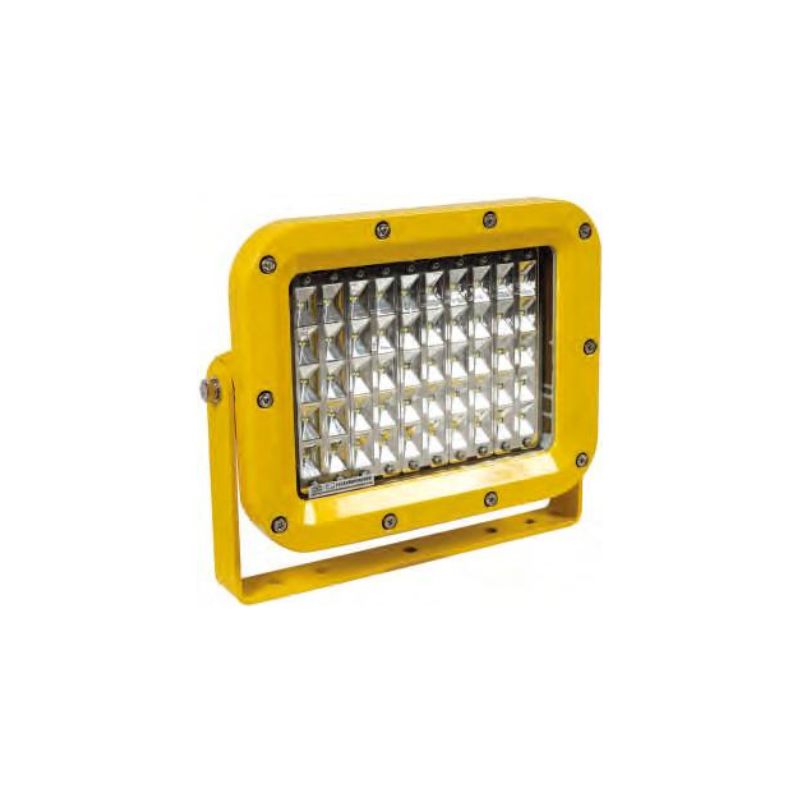
Environmental and Operational Challenges and Solutions in Marine Explosion-proof Lights
This chart provides the problems that arise, the reasons for them and the solutions that are employed to ensure that explosion-proof lights for marine use remain safe long-lasting, reliable, and durable in the harshest of environments.
| Challenge | Description | Solutions |
| Corrosion | The continuous exposure to humidity, saltwater and marine chemicals may cause corrosion of metal housings and even damage electrical components | Make use of marine-grade stainless steel, aluminum alloys, or brass that has anti-corrosion coatings, as well as epoxy protective finishes |
| Vibration and Shock | The constant engine vibration and the waves can cause fixtures to loosen and cause damage to wiring or even crack lenses | Integrate vibration-proof mounts and seals that absorb shock, and strengthened housing designs. |
| Water Ingress | Rain, splashing or immersion can result in electrical shorts and internal condensation | Design with IP66/IP67 seals, gaskets with waterproof seals, enclosures that are waterproof and moisture-proof |
| Temperature Extremes | The large temperature variations between engines rooms and decks can cause stress to materials and decrease LED efficiency. | Install thermo-management systems for thermal control, heat sinks and temperature-stable material |
| Explosive Atmospheres | The presence of flammable gasses or dust can increase the likelihood of sparks | Make use of fireproof (Ex D) and more secure (Ex E) enclosures, wiring that is spark-proof and the correct grounding |
| UV Exposure | Exposure to sunlight for long periods of time can cause deterioration of materials and decrease the quality of the lens. | Use UV-resistant polycarbonate, or tempered glass lenses with UV-stable coatings |
| Electrical Instability | The power surges or fluctuations in voltage can cause damage to LEDs or drivers. | Include surge protectors in your system, constant current drivers, and EMI shielding |
| Maintenance Limitations | A difficult access to sea may delay the process and add costs. | Use modular designs, long-lasting LEDs, as well as tool-free maintenance systems |
| Condensation Inside Fixtures | Rapid changes in humidity or temperature can lead to fogging in lenses | Utilize desiccant valves, breather valves packs, and closed optical chambers |
| Regulatory Compliance | International standards vary, which can make it difficult to complete the process of obtaining certification and installing | Design that meets ATEX, IECEx, DNV ABS, IP, and ATEX requirements for rating |
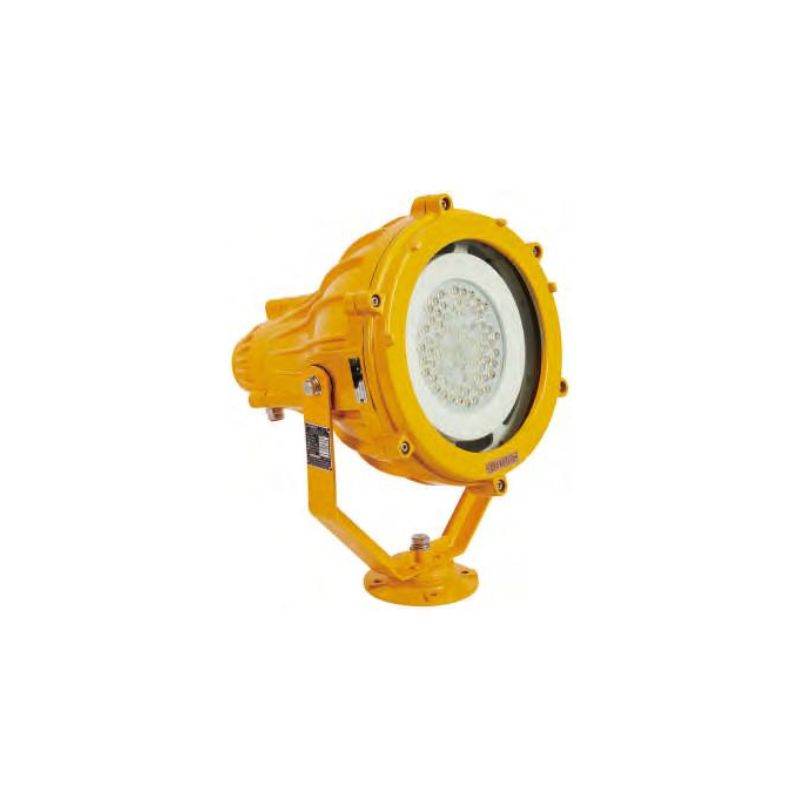
Applications of Explosion-proof Lighting in Marine Industry
This chart shows how the use of explosion-proof lighting is essential for the maritime industry, as it ensures safety, compliance and reliable operation in high-risk zones of ships and offshore facilities.
| Application Area | Description | Importance of Explosion-Proof Lighting |
| Engine Rooms | Compartments that house generators, engines, and fuel systems | It prevents the ignition of flammable gases from lubricants or fuels as well as ensures safe maintenance and operation |
| Fuel Storage and Handling Areas | Tanks, bunkering station and zones of fuel transfer | Reduces the risk of sparks that ignite fuel vapors, and ensures solid illumination when loading or unloading |
| Chemical and Cargo Decks | The areas where chemicals that are flammable or bulk cargo are kept | The system protects the equipment and crew by keeping internal ignition sources out of the way and improves visibility during operation |
| Offshore Oil and Gas Platforms | Processing, production and utility areas are located on drilling rigs | Protects against dangers in high-risk areas by utilizing flammable gases. It is also durable against weather extremes and corrosion |
| Pump and Valve Rooms | Rooms equipped with pumps for chemicals, fuel or water | Reduces risk of fire and permits secure monitoring and access to emergency services |
| Helicopter Decks / Flight Operations | Helidecks and fuel handling zones for aviation | It provides clear, safe lighting with no ignition risk when taking off, landing or fueling |
| Cargo Holds and Engine Access Points | The deck is surrounded by a series of restricted areas. | Keeps the view open to ensure inspections and emergency escapes without sparking risks |
| Offshore Support Vessels | Work vessels that handle flammable goods or maintenance operations | Assuring safety of the crew and operational efficiency in high-risk settings |
| Navigation and Signal Lighting | Deck areas that are exposed to chemicals or even fuel | It combines safe illumination and compliance to the marine safety regulations |
| Emergency and Escape Routes | Stairwells, corridors and muster stations in areas of danger | Safe evacuation pathways without exposing yourself to sparks from explosive environments |

Final Thoughts
Designing explosion-proof lights for marine environments involves the balance of safety, durability, and performance into a specific system. With careful selection of materials, flame containment engineering sophisticated sealing techniques, and thermal control, these lights guard both assets and personnel in dangerous conditions. As marine operations expand into more complex areas, explosion-proof lighting will be an essential element for efficient shipping and offshore operations, ensuring safe illumination.
